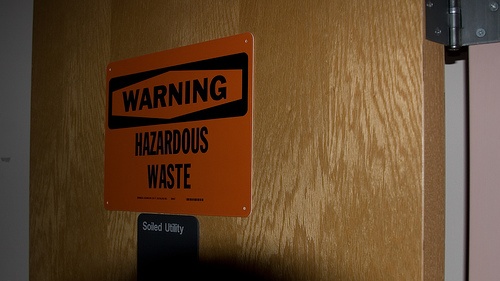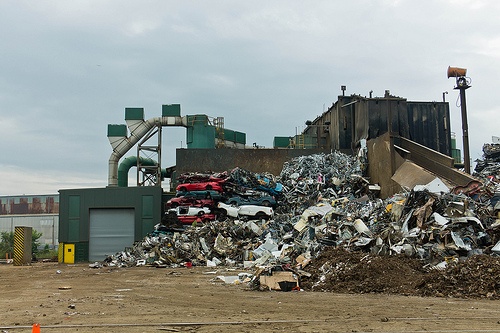The US Green Building Council (USGBC), founded in 1993, is a consensus-based nonprofit organization with more than 12,000 national members representing the entire building industry. USGBC plays an important role in providing leadership and integration for the building industry in driving sustainable building.
Read MoreAudit, Compliance and Risk Blog
The US Green Building Council’s New LEED v4 Rating System
Posted by Rebecca Luman on Thu, Dec 15, 2016
Tags: Health & Safety, Environmental risks, Environmental, EHS, RCRA
EPA Proposes First Major Reviews of Existing Chemicals Under the 2016 Amendments to TSCA
Posted by Jon Elliott on Tue, Dec 13, 2016
The Toxic Substances Control Act (TSCA) was enacted in 1976 to develop adequate data regarding the effects of chemical substances and mixtures on human health and the environment, and to prevent unduly hazardous chemicals from entering commercial use. Over the next 40 years the US Environmental Protection Agency (EPA) focused on addressing new chemical substances, and made minimal progress on updating information about the 62,000 chemicals already in commerce when TSCA was enacted, to discern whether those chemicals posed unacceptable hazards. (I summarized basic provisions here). As the exception proving that rule, EPA conducted a decade-long review of asbestos before determining it should be banned, only to have the decision overturned by a federal court finding that the agency hadn’t incorporated adequate cost-benefit analyses.
Read MoreTags: Environmental risks, Environmental, EPA, Hazcom, tsca
The U.S. Environmental Protection Agency (EPA) administers rules governing the import and export of hazardous waste regulated by the Resource Conservation and Recovery Act (RCRA). These rules ensure that the U.S. meets its international responsibilities as a member of the Organization for Economic Cooperation and Development (OECD) by creating national rules that meet agreed-upon OECD standards.
Read MoreTags: Environmental risks, Environmental, EPA, Greenhouse Gas, ghg, Hazcom
As the United States’ Presidential election lurches toward November 8, I wanted to summarize the two major candidates’ positions on environmental issues. Starting with Republican nominee Donald Trump, the first thing to observe is that his official candidate campaign webpage does not list ‘environmental’ as one of the major pull-down issues available for viewing. However, positions on environmental issues are presented in the policy areas that are addressed.
Read MoreTags: Environmental risks, Environmental, EPA
The World Decides To Help The Climate By Helping The Ozone Layer
Posted by Jon Elliott on Tue, Oct 25, 2016
Last month I blogged about basic provisions of the Montreal Protocol on Substances that Deplete the Ozone Layer, and ongoing negotiations to expand it to require phaseout of chemicals that harm the stratospheric ozone layer and contribute to climate change (click here, and included links to early blogs on Montreal Protocol issues). At that time, proposals all focused on hydrofluorocarbons (HFCs). At that point, global HFC use was increasing by roughly 10% annually, driven primarily by expanding use for air conditioning as hot developing countries sought to catch up with comfort levels in their developed counterparts. Proposed timelines and end-targets for reversing that expansion varied considerably.
Read MoreTags: Environmental risks, Environmental, EPA, ghg, climate change
U.S. Commission on Civil Rights Criticizes EPA’s Environmental Justice Efforts
Posted by Jon Elliott on Tue, Oct 18, 2016
In September 2016, the U.S. Commission on Civil Rights (Commission) issued its annual “Statutory Enforcement Report for 2016”; this year’s topic is the Environmental Protection Agency’s (EPA’s) efforts to protect and promote “Environmental Justice.” The Commission reviews decades of EPA efforts, and criticizes longstanding inadequacies.
Read MoreTags: Health & Safety, Environmental risks, Environmental, EPA, ghg, Hazcom, RCRA
To improve the efficiency of RCRA Corrective Action, in 2014, EPA Regions 3 and 7 began a pilot to implement RCRA Corrective Action using Lean process analysis with the goal of clarifying goals and expectations early in the process. The Lean process is a collection of principles and methods that focus on the systematic identification and elimination of non-value-added activity involved in producing a product or delivering a service to customers. Within the RCRA Corrective Action program, the Lean process was used to remove various redundant steps and frontload goals and expectations through a corrective action framework (CAF), resulting in significant time savings.
Read MoreTags: Environmental risks, Environmental, EHS, EPA, Hazcom, RCRA
White House Guidance for Agency Consideration of Climate Change in Environmental Reviews
Posted by Jon Elliott on Tue, Sep 20, 2016
On August 2, the White House’s Council on Environmental Quality (CEQ) issued guidance to assist federal agencies in their consideration of the effects of greenhouse gas (GHG) emissions and climate change when evaluating proposed federal actions. I refer to this documents as “the Guidance” below.
Read MoreTags: Environmental risks, Environmental, EPA, Greenhouse Gas, ghg, climate change, CAA, CEQA
New Rules Tighten Greenhouse Gas Emission Standards for Heavy Duty Vehicles
Posted by Jon Elliott on Thu, Sep 15, 2016
The Clean Air Act (CAA) includes extensive regulatory requirements on “mobile sources,” which cover efficiency and emissions standards for a broad range of vehicles with internal combustion engines (automobiles, buses, aircraft), “nonroad engines and vehicles” (including lawnmowers, bulldozers and marine vessels), as well as motor fuel standards intended to promote cleaner burning fuels. The U.S. Environmental Protection Agency (EPA) uses CAA authority to set emission limits from engines, for CAA-regulated air pollutants, including carbon dioxide (CO2) regulated for its greenhouse gas (GHG) aspects.
Read MoreTags: California Legislation, Environmental risks, Environmental, EPA, Greenhouse Gas, ghg, climate change, CAA, Transportation
EPA Takes Another Step Towards Regulating GHG Emissions From Aircraft
Posted by Jon Elliott on Tue, Sep 06, 2016
On July 25, the Environmental Protection Agency (EPA) issued a formal finding under the Clean Air Act (CAA), that greenhouse gas (GHG) emissions from aircraft “endanger public health or welfare.” This aircraft-specific finding builds on EPA’s 2009 finding that GHGs endanger public health, covering the same six GHGs: carbon dioxide (CO2), methane, nitrous oxide, hydrofluorocarbons, perfluorocarbons, and sulfur hexafluoride. EPA calculates that aircraft produce 12 percent of all U.S. transportation GHG emissions and more than 3 percent of total U.S. GHG emissions, and that U.S. aircraft GHG emissions represent 29 percent of all global aircraft GHG emissions and 0.5 percent of total global GHG emissions.
Read MoreTags: Environmental risks, Environmental, EPA, Greenhouse Gas, ghg










